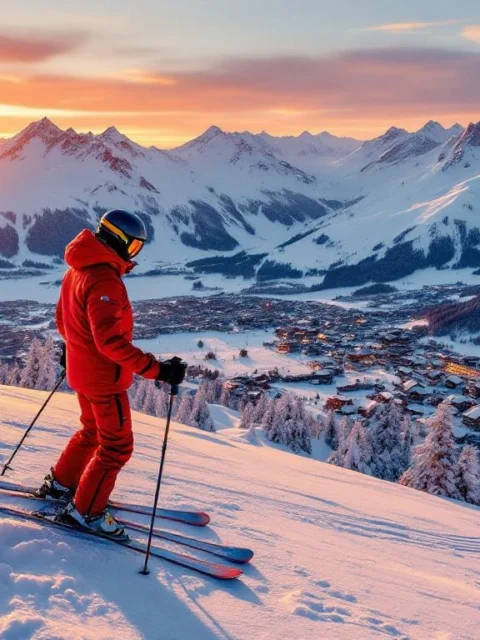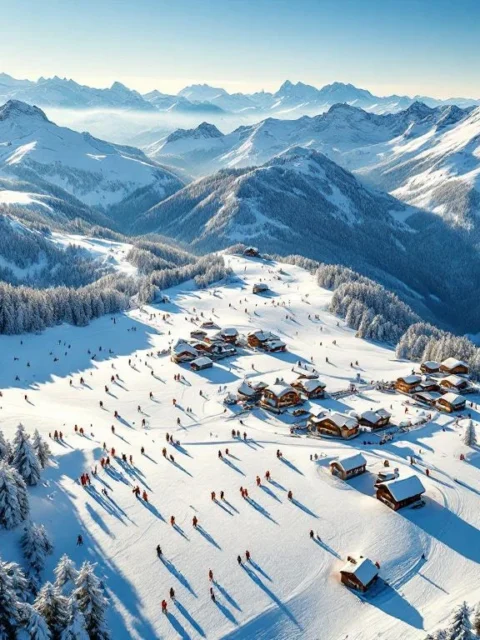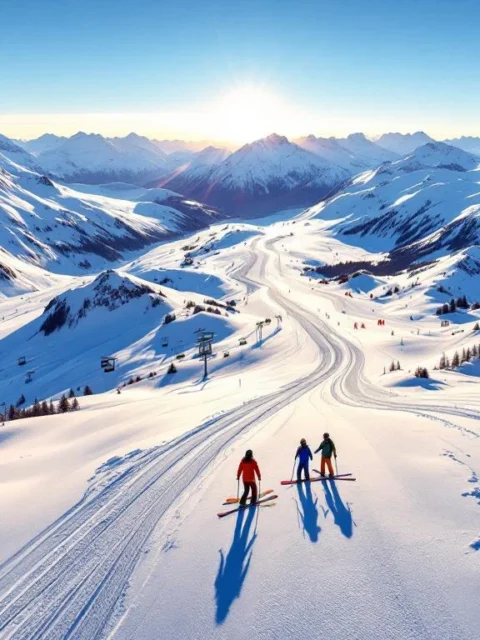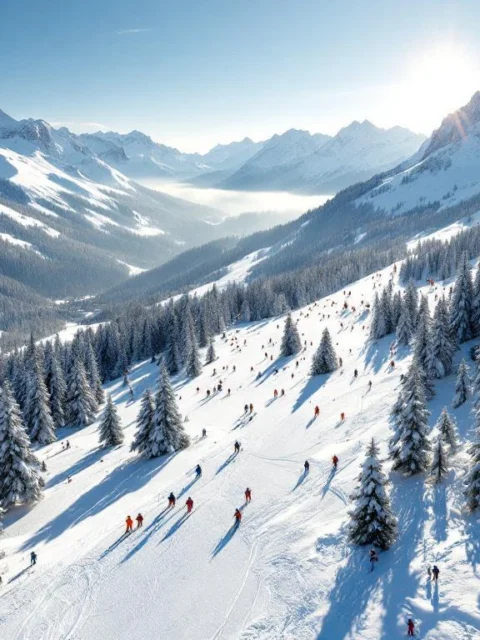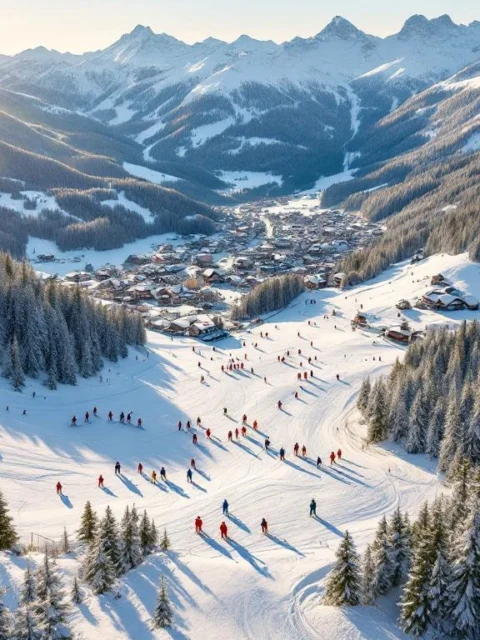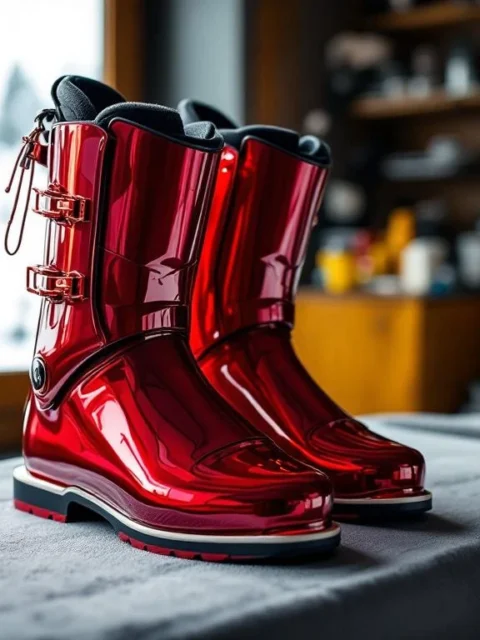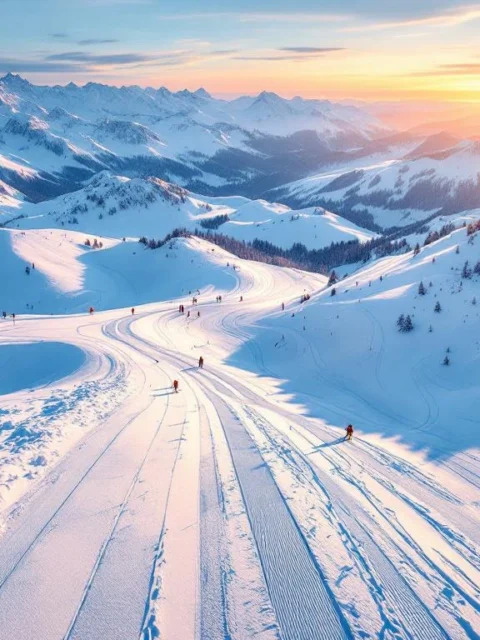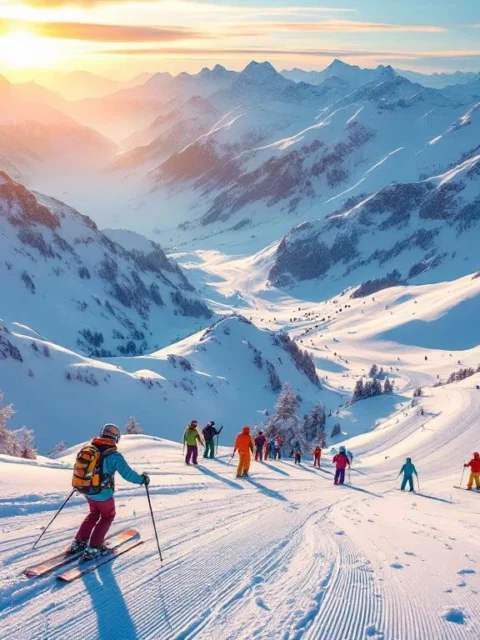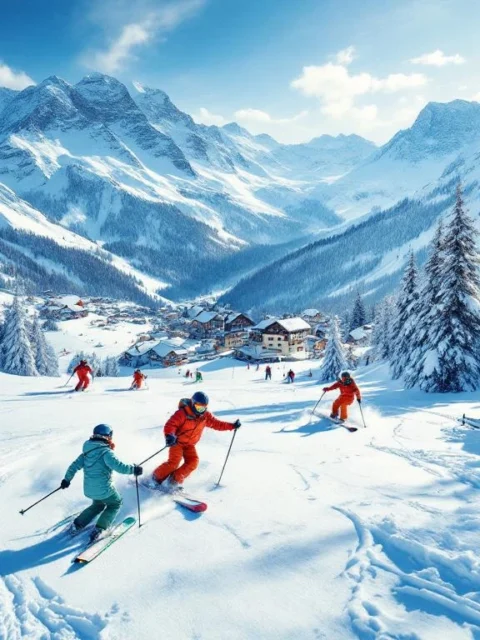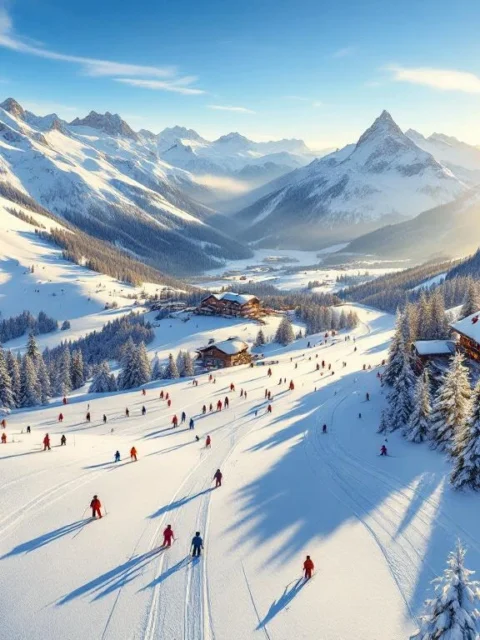Which month has the most snow in Austria?
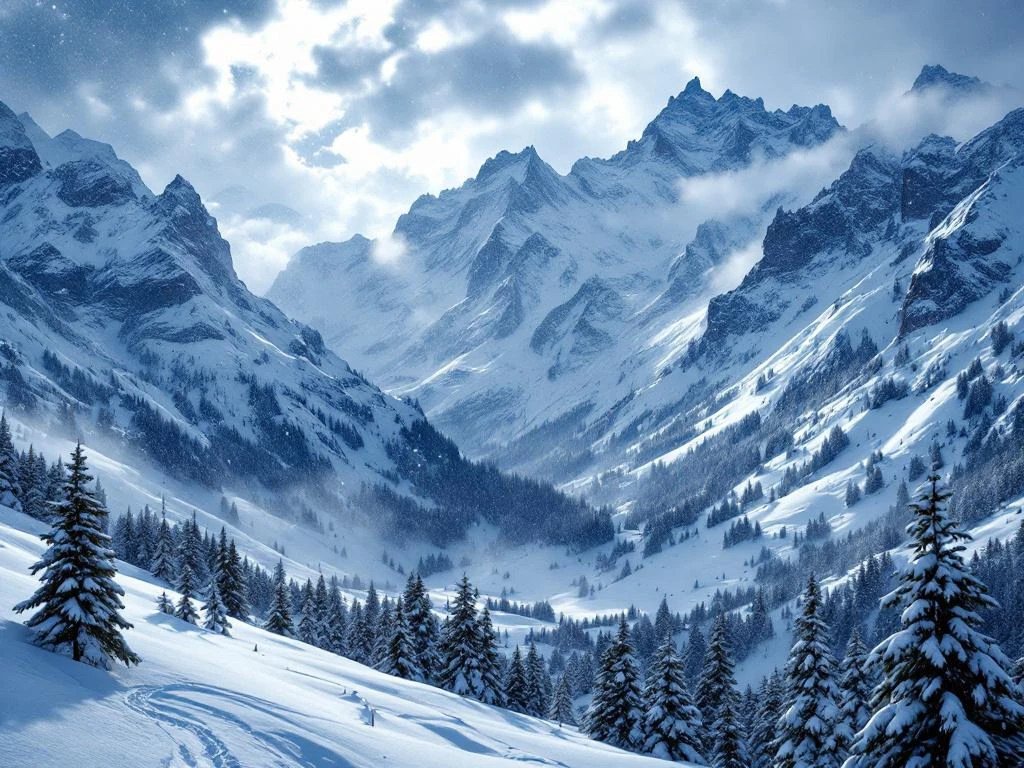
Most snow falls in Austria between December and March, with January and February as the absolute peak months. During this period, the Austrian Alps receive on average the most natural snowfall, especially at altitudes above 1500 meters. For winter sports enthusiasts, this means optimal powder snow conditions and the best chance of snow-sure skiing in Austria’s beautiful ski areas.
When Does the Most Snow Fall in Austria?
The snow season in Austria runs from December to April, with snowfall following a clear pattern. The Austrian Alps receive their heaviest snowfall during the winter months, particularly between mid-December and the end of March.
The timing of snowfall is crucial for winter sports enthusiasts planning their perfect ski vacation. As powder-spotting snow lovers, we know that proper timing makes the difference between a good and an unforgettable winter sports experience.
The Alpine climate creates different snow zones. Above 2000 meters, snow often lies from November onwards, while lower ski areas depend on winter storms that regularly sweep across the mountains from December.
Which Month Traditionally Has the Most Snowfall in the Austrian Alps?
January is known as the snowiest month in most Austrian ski areas, followed by February. These months bring the coldest temperatures and the most consistent snowfall.
January sees on average the most natural snow, especially in the higher regions of Tyrol and Salzburg. The combination of low temperatures and moist air currents from the west creates ideal conditions for snow formation.
February also ranks high on the list, often with the best quality powder snow. The cold nights and sunny days make February a favorite among experienced winter sports enthusiasts seeking that perfect first-track experience.
December can bring surprisingly heavy snow, especially in the second half of the month. March often still offers excellent snow conditions, with the advantage of longer days and milder weather.
How Does Snowfall Differ Between Various Austrian Ski Areas?
The snowfall patterns vary considerably between different regions in Austria. Altitude, geographical location, and local microclimate factors all play important roles.
Tyrol, with iconic areas like Innsbruck and surroundings, benefits from its location in the heart of the Alps. The high peaks catch much snow, especially on the northern sides of the mountains where cold winds provide additional precipitation.
Salzburg and surrounding ski areas often receive snow from different wind directions. The region is known for its reliable snowfall throughout the entire season, particularly in areas above 1200 meters.
| Region | Best Snow Months | Average Snow Depth |
|---|---|---|
| Tyrol (high altitude) | December – March | 150-300 cm |
| Salzburg | January – February | 100-250 cm |
| Lower areas | January – February | 50-150 cm |
What Is the Difference Between Natural Snow and Artificial Snow in Austrian Ski Areas?
Artificial snow forms an essential part of modern Austrian ski areas and perfectly complements natural snowfall. Snow machines usually start operating in November when temperatures drop below freezing.
Natural snow provides that unmatched powder snow experience that every winter sports enthusiast dreams of. This snow is lighter, softer, and gives a unique skiing experience that artificial snow cannot match.
Artificial snow is strategically deployed to create a solid base and guarantee season security. Modern snow systems can produce snow at temperatures of -2°C, meaning many slopes can open as early as December.
The combination of both types of snow ensures that Austrian ski areas can offer excellent conditions from December to April, regardless of natural snowfall patterns.
When Is the Best Time to Ski in Austria for Optimal Snow Conditions?
For the best snow conditions, plan your ski vacation between mid-January and the end of February. This period combines maximum snow security with excellent snow quality.
January offers the most fresh snow and cold temperatures that ensure perfect powder snow conditions. If you’re seeking that magical first-track experience, this is your month.
February gives you the best of both worlds: plenty of snow and somewhat longer days. The snow base is at its thickest and most slopes are fully open.
For families with children, March is often ideal. There’s still sufficient snow, but the weather is milder and days are longer. When booking ski lessons through our platform, you’ll see that March is also popular due to school holidays.
December can be fantastic for early birds who enjoy quiet slopes, but account for possibly limited slope opening in lower areas.
How Can You Use Snow Forecasts When Planning Your Ski Vacation?
Snow reports are your best friend when planning a successful winter sports vacation. Learn to use these tools effectively for optimal results.
Start by checking long-term forecasts approximately two weeks before your departure. Pay special attention to temperature trends and precipitation forecasts for your specific ski area.
Reliable sources like local weather stations and official ski area websites provide the most accurate information. Many Austrian ski areas update their snow reports daily with current slope conditions.
Flexibility is key for powder-hunting snow lovers like us. Consider booking your accommodation and ski lessons definitively only when weather forecasts are favorable, or choose options with flexible cancellation conditions.
Don’t forget that snow forecasts are mainly reliable for the next 3-5 days. For longer-term planning, focus better on historical snow data and seasonal averages for your chosen ski area.
Whether you’re looking for that perfect powder snow day or simply want to enjoy reliable slope conditions, the Austrian Alps offer fantastic possibilities. With proper timing and preparation, an unforgettable winter sports experience awaits you in one of Europe’s most snow-sure destinations.


